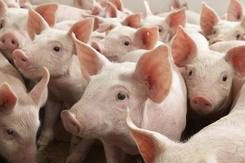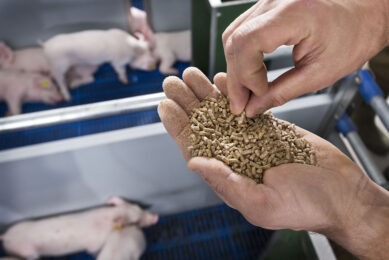Forced ventilation by fans – part 1

Some 40 years ago when I was young and handsome and an on-farm problem-solver, many of my call-outs were on the subject of piggery ventilation. I thought I had quite a bit of experience in sorting things out and was even confident enough to write about it in the press.
Some 40 years ago when I was young and handsome and an on-farm problem-solver, many of my call-outs were on the subject of piggery ventilation. I thought I had quite a bit of experience in sorting things out and was even confident enough to write about it in the press.
One day a polite letter arrived from our Institute of Agricultural Engineering saying that I obviously did not understand some important points about controlling air movement and would I like to attend a course on the basics of ventilation? Once I got over my shock, I took a deep breath, attended the two days and spent a further day with them in their labs getting some one-on-one tuition using their demonstration equipment.
Best thing I ever did! Some of what they taught me I describe in this series on ventilation basics. If you understand the way air moves and the principles of thermodynamics, then you will get things right.
Ten essential rules
Rule 1
Get control of air movement. In natural ventilation, in contrast to fan ventilation, the pigs and the outside weather conditions dictate the internal air patterns. With forced ventilation the fans and the internal shape or the room are the primary dynamic forces.
Rule 2
Control of air movement can only be achieved by sealing the building. And I do mean seal! How can air currents be controlled if the building leaks air, thus distorting them? The average
well-built piggery has cracks and crevices around doors and windows adding up to over a square metre of open space. Air movement cannot be efficiently controlled with a metre-square hole in the wall or roof! So such cracks have to be sealed with brushes or air-excluders. These are not a luxury but a necessity and are worth the extra expense.
Rule 3
Ventilate the dunging area first, the pigs last. Most dirty-pen problems are due to a failure to follow this primary rule, except in very hot conditions when the air currents can be reversed to cool the pigs. This is less important in totally slatted pens, but you still need to delineate between the sleeping/resting area and the wetter voiding/drinking area. Air positioning primarily influences this so as to secure contented, rapidly-growing pigs.
Rule 4
Have a long air travel. This ensures two vital things, the colder air from outside is slowed down to not more than 0.2 m/s over the pigs’ backs which is five seconds to cross one metre. Slow, isn’t it? This will not disturb the pigs ‘thermal envelope’ by not removing too much of the skin-radiated heat which comes from the food you feed the animal. Good mixing of cold incoming air with warm inside air is achieved so that the pigs are never in a cold air current or draught. In hot weather a properly-designed system is reversed with the air speed increased. The control of air movement allows this to be done.
Rule 5
Fans do not direct the air. Fans are solely the source of power. Do not use fans to control the air pattern. Providing the building is well-sealed, fans can be placed anywhere. It is the inlets and inlet air speed which are critical and this will be explained by Rules 6 to 10 , in the next issue.
Ventilation designs
Figure 1 shows two different ventilation designs with the pigs on the two most common layouts – pigs on the outside of the floor plan and pigs on the inside. Notice that the location of the fans is the same – only the type and positioning of the inlets and where the pigs are situated are different.
[Source: Pig Progress magazine Vol 29 nr 5, 2013 – ‘What the textbooks don’t tell you about…’ series]
Join 18,000+ subscribers
Subscribe to our newsletter to stay updated about all the need-to-know content in the pigsector, three times a week. Beheer
Beheer










 WP Admin
WP Admin  Bewerk bericht
Bewerk bericht